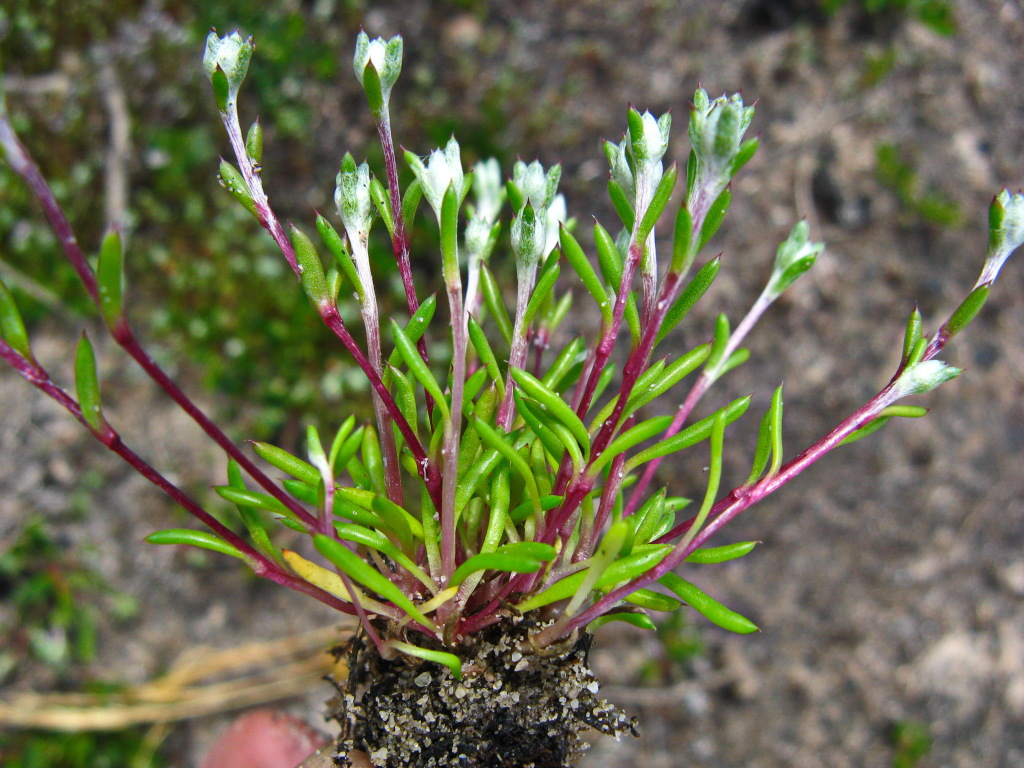Angianthus preissianus
(Steetz) Benth. Salt AngianthusProstrate to erect, subglabrous to cobwebbed annual, 5–16 cm long, simple or branched. Leaves narrowly elliptic or c. linear, sometimes c. succulent and subterete, 5–12 mm long, 1–2 mm wide, mucronate. Compound heads broadly to depressed-ovoid, 4–10 mm long, 4–11 mm diam., with 5–100 capitula; bracts subtending compound heads forming a conspicuous involucre about as long as the head. Capitulum-subtending bracts 1(–2), hyaline; capitular bracts 1.6–2.3 mm long, whitish, midrib hairy toward apex. Florets 2 per capitulum; corolla 3(–5)-lobed, tube 0.9–1.4 mm long. Cypselas c. obovoid, 0.5–0.8 mm long, c. 0.3 mm diam., variably papillose, often with a fringe of glandular hairs at the apex; pappus absent. Flowers Sep.–Jan.
LoM, MuM, Wim, GleP, Brid, VVP, GipP, OtP, WaP, Gold, CVU, GGr, DunT, EGL, HSF. Also WA, SA, Tas. Locally common in both inland and coastal samphire communities.
Short, P.S. (1999). Angianthus. In: Walsh, N.G.; Entwisle, T.J., Flora of Victoria Vol. 4, Cornaceae to Asteraceae, pp. 812–814. Inkata Press, Melbourne.
 Spinning
Spinning

